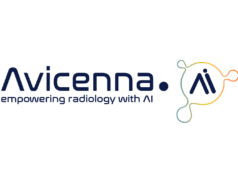 Viz.ai has announced receipt of US Food and Drug Administration (FDA) 510(k) clearance for its Viz Intracerebral Haemorrhage (ICH) Plus algorithm, which is intended to automate the process of identifying, labelling and quantifying the volume of segmentable brain structures on non-contrast computed tomography (NCCT) images.
Viz.ai has announced receipt of US Food and Drug Administration (FDA) 510(k) clearance for its Viz Intracerebral Haemorrhage (ICH) Plus algorithm, which is intended to automate the process of identifying, labelling and quantifying the volume of segmentable brain structures on non-contrast computed tomography (NCCT) images.
The Viz ICH Plus software is indicated for analysing intracranial hyperdensities, lateral ventricles, and midline shift, providing volume measurements of brain bleeds for timely and informed treatment decisions—according to a company press release.
“The ability and mobility to obtain accurate and quantifiable measurements of intracerebral haemorrhages through Viz ICH Plus significantly enhances our decision-making process,” said Peter Kan (University of Texas Medical Branch, Galveston, USA). “This technology, which marries precision with AI [artificial intelligence], is poised to transform how we approach intracerebral haemorrhage cases.”
In its recent release, Viz.ai details that accurate volume measurements of brain bleeds are “crucial” for assessing the severity of ICH cases, as well as monitoring progression and planning treatment strategies.
The company further notes that radiologists, neurologists and neurosurgeons can incorporate Viz ICH Plus “seamlessly” into their workflows, and automate the manual process of measuring brain bleeds. The Viz ICH Plus software is available on the AI-powered Viz.ai One solution—an enterprise platform that is clinically validated, saves time, improves patient outcomes and increases access to life-saving treatments across more than 1,500 hospitals in the USA.
“At Viz.ai, our mission is rooted in advancing healthcare through innovation,” said Jayme Strauss, chief clinical officer at Viz.ai. “Viz ICH Plus exemplifies our dedication to enhancing patient care by leveraging technology. We are excited to introduce a product that bridges the gap between AI capabilities and improved patient outcomes.”
ISC 2024
Recently, Viz.ai also announced new clinical data supporting advancements in neurovascular care across six studies presented at the International Stroke Conference (ISC; 7–9 February 2024, Phoenix, USA). A company release notes that these pieces of research have shown positive outcomes indicating the real-world impact of Viz.ai in clinical practice across various neurology pathologies, including acute ischaemic stroke, cryptogenic stroke, unruptured incidental aneurysm (UIA), and brain haemorrhage.
The six study abstracts in question—all highlighted by Viz.ai in the lead up to ISC 2024—are as follows:
- “Artificial intelligence algorithm as a diagnostic tool for aneurysms” evaluated the performance of the Viz Aneurysm algorithm and found that—across 963 retrospectively collected head CT scans—Viz Aneurysm demonstrated a specificity of 96.8%, and a negative predictive value of 97.2%.
- “User engagement is associated with clinical impacts of automated LVO [large vessel occlusion] detection software” was a post-hoc analysis of a multicentre, prospective, randomised clinical trial. The analysis found an 11-minute reduction in door-to-groin time across all centres with Viz LVO implementation and, Viz.ai claims, is the first of its kind to assess the impact of AI in the acute stroke workflow based on user engagement.
- “Estimation of ventricular and intracranial haemorrhage volumes and midline shift on an external validation data set using a convolutional neural network algorithm” evaluated the performance of the Viz ICH Plus convolutional neural network (CNN) in automatically quantifying ICH and lateral ventricular (LV) volumes, as well as midline shift (MLS), compared to more time-intensive, manual segmentation done by neuroradiologists. The described CNN performed “exceptionally well” at quantifying ICH, LV volumes, and MLS, with satisfying agreement on trend analysis in an independent validation imaging set.
- “Impact of AI on acute ischaemic stroke treatment in a large academic healthcare system” assessed the impact of the implementation of a stroke triage AI software on a large academic healthcare system. In addition to a reduction in time to treatment, the results of this research showed a “large reduction” in unnecessary transfers throughout the two-year study.
- “Door to angiography in LVOs pre- and post-implementation of automated image interpretation and sharing platform: a single-centre study” showed that implementation of Viz LVO software was associated with shorter intervals between initial hospital contact and neurointervention among transferred patients.
- “Long-term cardiac monitoring in cryptogenic stroke: the San Diego experience” evaluated the real-world reliability and experience of implantable cardiac monitors in two large, academic comprehensive stroke centres (CSCs). The study showed that long-term cardiac monitoring has been shown to detect significant rates of atrial fibrillation—especially in cryptogenic stroke.
“As a leader in AI-powered stroke detection and care coordination, Viz.ai does not rest on what we have done, but instead continues to invest in proving the accuracy and impact of our comprehensive Viz Neuro Suite,” said Molly Madziva Taitt, the company’s vice president of Global Clinical Affairs. “Our commitment to neurology care teams and the patients who benefit from early intervention is a core value at Viz.ai; when we say ‘patients first’, we mean it.”










